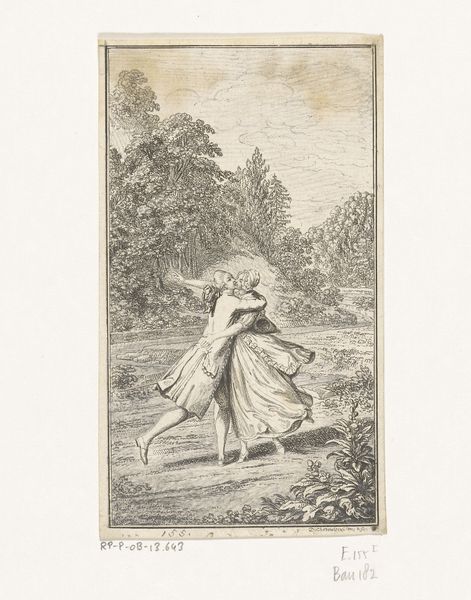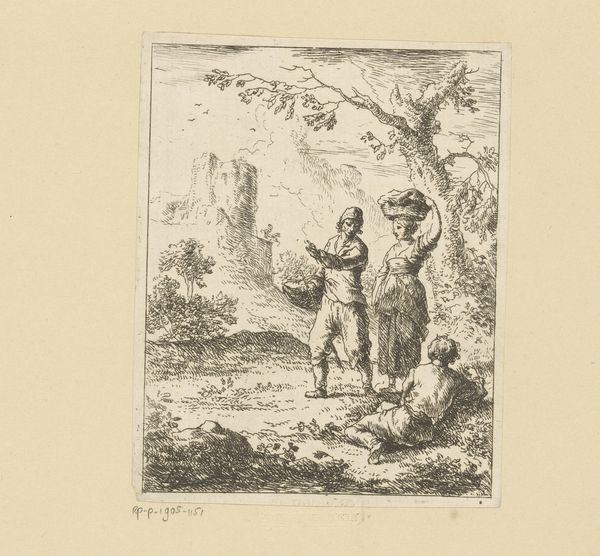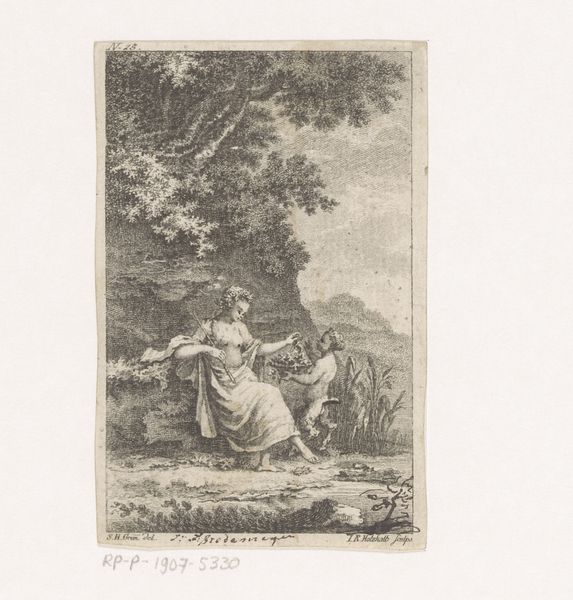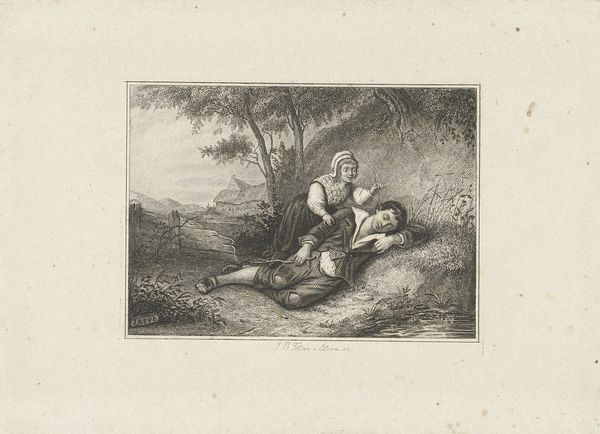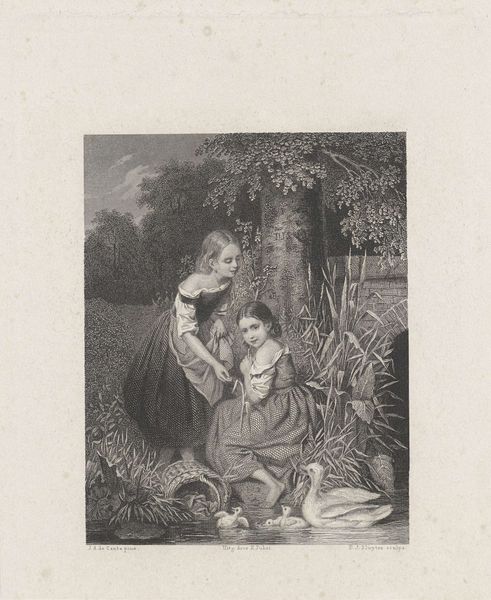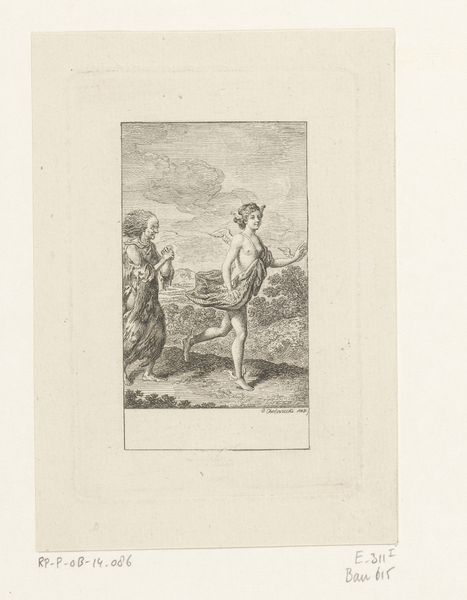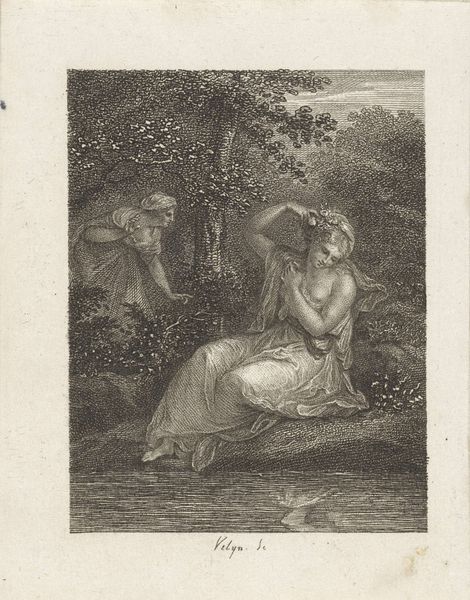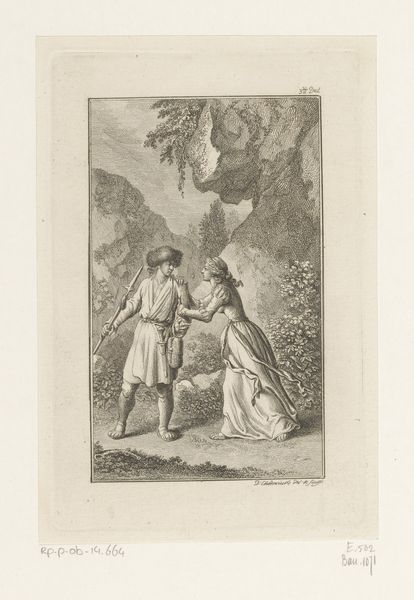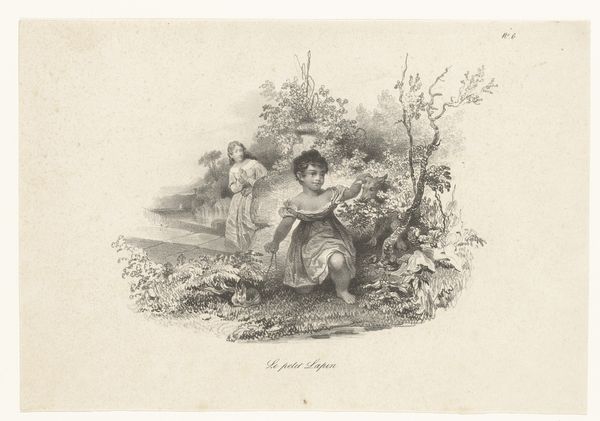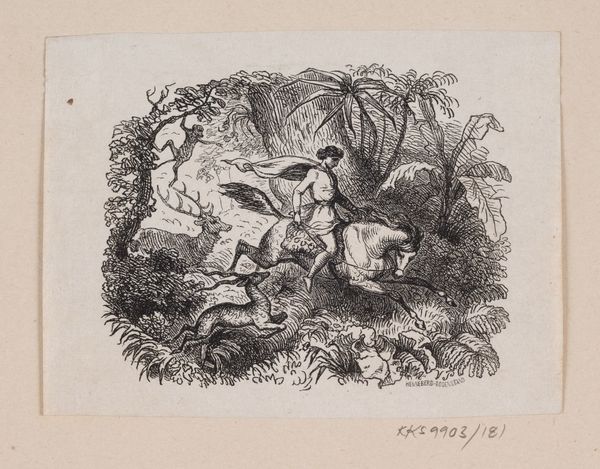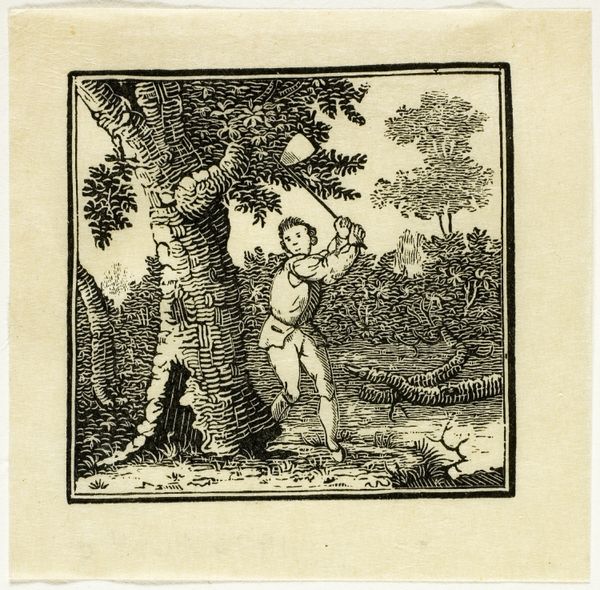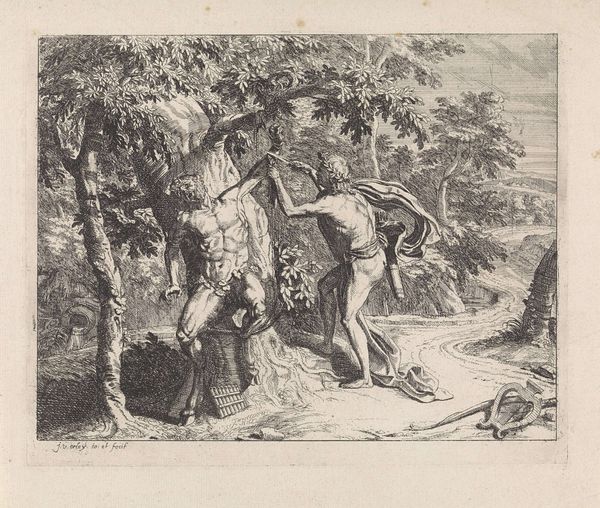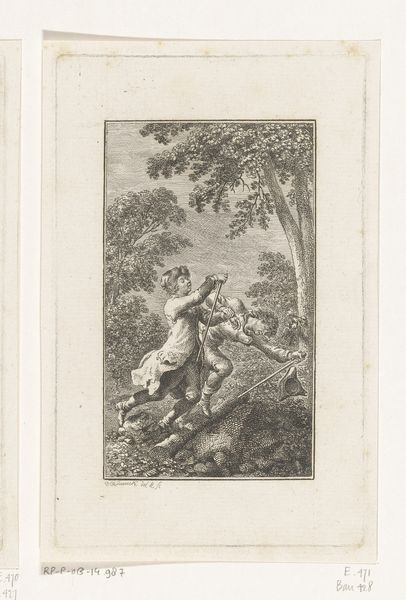
Dimensions: height 188 mm, width 237 mm
Copyright: Rijks Museum: Open Domain
Curator: This piece is titled "Oude dame kijkt naar een zoenend stel", which translates to "Old lady looking at a kissing couple". Dirk Jurriaan Sluyter likely created this pencil and engraving artwork somewhere between 1826 and 1886. Editor: It strikes me as quite melancholic. The grayscale palette really accentuates the emotional distance between the figures. What does this tonal art reveal? Curator: Well, observing art through an intersectional lens, one may ponder upon the concept of the gaze within Romantic-era societal norms. The elderly woman, as a marginalized figure of her time, could embody the limitations placed on women concerning intimacy and expression. Note, though, how love’s allegorical depiction as a statue of cupid towers over the entire interaction between youth and age! Editor: I agree. And the act of producing the image—the choice of pencil for sketching and engraving for creating a more polished reproduction—suggests the intent for wider distribution and consumption of a particular idealized narrative. Perhaps this narrative sought to normalize or romanticize specific gender roles for audiences viewing this very reproducible artwork. The pencil work provides subtle details. Curator: That's astute. Gender and social class are undeniably intertwined in how we understand the exchange depicted here. The labor that is the artist reproducing it allows new audiences to gaze and project. Are the youthful pair truly in love, or merely embodiments of performative affection? The artist encourages viewers to ponder love, freedom, and constraints within societal constructs. Editor: I find myself wondering about the engraving itself, that laborious act of cutting lines into a metal plate. What societal messages was the engraver, through that manual process, embedding? The lines forming the background's idyllic setting and the fine hatching giving volume to the woman's clothing—all created under a certain socio-economic condition for distribution to households and institutions, I imagine? Curator: Your point broadens my own viewing, by revealing the circumstances that would be overlooked by many other readings. Considering the context—Romanticism, early industrialization—it unveils further layers. The material production itself, then, speaks volumes beyond the scene depicted. The work becomes an artifact laden with the socio-economic implications of art-making itself! Editor: Indeed. When assessing “Oude dame kijkt naar een zoenend stel”, appreciating the techniques allows the narrative art to highlight the processes of image-making as another layer in its layered understanding. Curator: A crucial awareness, truly enhancing how we receive and engage with historical artistic statements today. Editor: It certainly changes our perception of art.
Comments
No comments
Be the first to comment and join the conversation on the ultimate creative platform.
